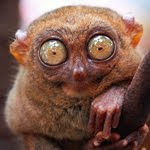Andres Mario Zervigon, Francis Bacon, GLBTQ - An Encyclopedia of Gay, Lesbian, Bisexual, Transgender, and Queer Culture, Chicago: GLBTQ, 2002-5. See also: John Singer Sargent and 20th Century European Art
"Fancis Bacon is widely recognized as Britain's most important twentieth-century painter. Through beautifully composed works featuring screaming faces and beaten bodies, Bacon marked the violent trauma characterizing Europe's past century. [...] In 1953 he exposed [...] sexual desire [...] with his Two Figures, a painting featuring photographer Eadweard Muybridge's famous wrestlers taken from the mat to the bed. The result was an unmistakable representation of one man raping another.
Remarkably, post-war Britain acclaimed this work and others as profound reflections on the century's trauma. Bacon's work was touted as England's enlightened alternative to American Abstract Expressionism."
Due to Bacon's predilection for ambiguity, Two Figures is not as evident as Zervigon supposes.
"Perhaps one day I will manage to capture an instant in all its violence and all its beauty" - Bacon, quoted in The Grotesque in the Instinctive Paintings (2009).
In the 1950s, Bacon gave this painting to Lucian Freud, as a present. Afterwards, the picture was very rarely exhibited, and even if illustrated in Bacon's second retrospective catalog at the Tate Gallery in 1985, the painting was surprisingly not included in that show. As his namesake predecessor once put it, "The job of the artist is always to deepen the mystery." - And Bacon the painter knew very well how to do that.
On the other hand, not every act of copulation is necessarily a case of rape in Bacon's imagery. Yet it is far from being either this or that. On the contrary, it usually involves being both this and that.
Illustrations. 1. Two Figures, 1953; 2. Two Figures, 1961; Two Figures in the Grass, 1954.
"Fancis Bacon is widely recognized as Britain's most important twentieth-century painter. Through beautifully composed works featuring screaming faces and beaten bodies, Bacon marked the violent trauma characterizing Europe's past century. [...] In 1953 he exposed [...] sexual desire [...] with his Two Figures, a painting featuring photographer Eadweard Muybridge's famous wrestlers taken from the mat to the bed. The result was an unmistakable representation of one man raping another.
Remarkably, post-war Britain acclaimed this work and others as profound reflections on the century's trauma. Bacon's work was touted as England's enlightened alternative to American Abstract Expressionism."
Due to Bacon's predilection for ambiguity, Two Figures is not as evident as Zervigon supposes.
"Perhaps one day I will manage to capture an instant in all its violence and all its beauty" - Bacon, quoted in The Grotesque in the Instinctive Paintings (2009).
In the 1950s, Bacon gave this painting to Lucian Freud, as a present. Afterwards, the picture was very rarely exhibited, and even if illustrated in Bacon's second retrospective catalog at the Tate Gallery in 1985, the painting was surprisingly not included in that show. As his namesake predecessor once put it, "The job of the artist is always to deepen the mystery." - And Bacon the painter knew very well how to do that.
On the other hand, not every act of copulation is necessarily a case of rape in Bacon's imagery. Yet it is far from being either this or that. On the contrary, it usually involves being both this and that.
Illustrations. 1. Two Figures, 1953; 2. Two Figures, 1961; Two Figures in the Grass, 1954.









No comments:
Post a Comment